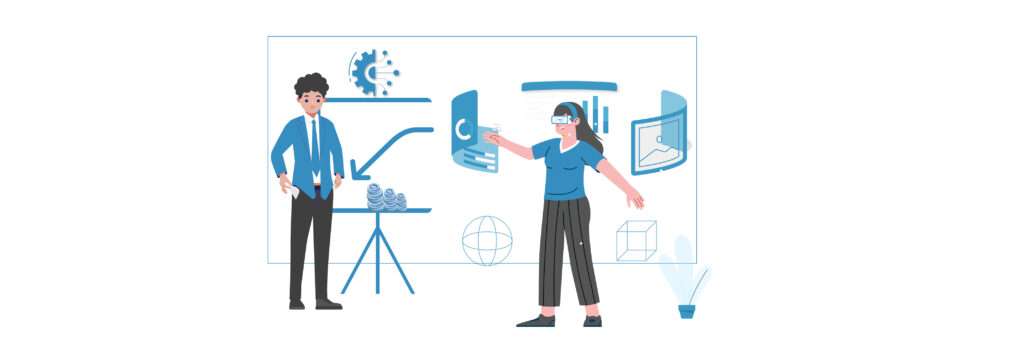Selling to customers on credit is an essential customer service that expands a company’s revenue potential beyond cash sales. However, it comes with the burden of invoice creation, distribution, payment collection, and overall process management. Mismanagement can lead to cash flow issues and strained customer relationships. This is why businesses, irrespective of size, have adopted accounts receivable (AR) automation to streamline operations and enhance efficiency.
The cost to process customer invoices can range from $2 to $9, depending on the level of automation, according to the American Productivity and Quality Center (APQC). Apart from cost savings, AR automation offers comprehensive benefits to optimize the entire AR process.
 Shorter order-to-cash cycle – One of the most notable advantages is the improvement in cash flow by expediting the order-to-cash (OTC) cycle. The OTC cycle encompasses all activities from the point of making a sale to receiving payment from the customer. By leveraging AR automation, businesses can reduce the time required for this cycle, resulting in faster receipt of cash. Integration of AR automation with front-end systems like order and inventory management further enhances this process.
Lower DSO – Automated AR systems have the potential to decrease days of sales outstanding (DSO), a metric that measures the number of days it takes for a sale to be paid. For instance, it accelerates invoicing workflows, leading to faster cash flow and improved liquidity for the company. By streamlining these processes, businesses can optimize their financial operations and enhance their overall performance.
Better operational efficiency – AR automation also enhances efficiency, strengthens security measures, and improves management oversight. It enables businesses to effectively organize and protect customer data while gaining real-time access and reporting capabilities through tools like dashboards. These benefits facilitate data analysis and provide valuable insights for better decision-making.
Stronger customer relations – Finally, the accuracy, timeliness, and convenience provided by AR automation contribute to building customer confidence. Standardized processes, including reminders and dunning notices, ensure consistency and professionalism throughout the AR process. It goes without saying, AR automation plays a vital role in reducing uncollected receivables.
Shorter order-to-cash cycle – One of the most notable advantages is the improvement in cash flow by expediting the order-to-cash (OTC) cycle. The OTC cycle encompasses all activities from the point of making a sale to receiving payment from the customer. By leveraging AR automation, businesses can reduce the time required for this cycle, resulting in faster receipt of cash. Integration of AR automation with front-end systems like order and inventory management further enhances this process.
Lower DSO – Automated AR systems have the potential to decrease days of sales outstanding (DSO), a metric that measures the number of days it takes for a sale to be paid. For instance, it accelerates invoicing workflows, leading to faster cash flow and improved liquidity for the company. By streamlining these processes, businesses can optimize their financial operations and enhance their overall performance.
Better operational efficiency – AR automation also enhances efficiency, strengthens security measures, and improves management oversight. It enables businesses to effectively organize and protect customer data while gaining real-time access and reporting capabilities through tools like dashboards. These benefits facilitate data analysis and provide valuable insights for better decision-making.
Stronger customer relations – Finally, the accuracy, timeliness, and convenience provided by AR automation contribute to building customer confidence. Standardized processes, including reminders and dunning notices, ensure consistency and professionalism throughout the AR process. It goes without saying, AR automation plays a vital role in reducing uncollected receivables.

11 Benefits of AR Automation CFOs Cannot Overlook
Automating a company’s AR process offers a wide array of far-reaching benefits. Below are some of the most significant advantages:
AR Automation: What You Need to Know ?
 Shorter order-to-cash cycle – One of the most notable advantages is the improvement in cash flow by expediting the order-to-cash (OTC) cycle. The OTC cycle encompasses all activities from the point of making a sale to receiving payment from the customer. By leveraging AR automation, businesses can reduce the time required for this cycle, resulting in faster receipt of cash. Integration of AR automation with front-end systems like order and inventory management further enhances this process.
Lower DSO – Automated AR systems have the potential to decrease days of sales outstanding (DSO), a metric that measures the number of days it takes for a sale to be paid. For instance, it accelerates invoicing workflows, leading to faster cash flow and improved liquidity for the company. By streamlining these processes, businesses can optimize their financial operations and enhance their overall performance.
Better operational efficiency – AR automation also enhances efficiency, strengthens security measures, and improves management oversight. It enables businesses to effectively organize and protect customer data while gaining real-time access and reporting capabilities through tools like dashboards. These benefits facilitate data analysis and provide valuable insights for better decision-making.
Stronger customer relations – Finally, the accuracy, timeliness, and convenience provided by AR automation contribute to building customer confidence. Standardized processes, including reminders and dunning notices, ensure consistency and professionalism throughout the AR process. It goes without saying, AR automation plays a vital role in reducing uncollected receivables.
Shorter order-to-cash cycle – One of the most notable advantages is the improvement in cash flow by expediting the order-to-cash (OTC) cycle. The OTC cycle encompasses all activities from the point of making a sale to receiving payment from the customer. By leveraging AR automation, businesses can reduce the time required for this cycle, resulting in faster receipt of cash. Integration of AR automation with front-end systems like order and inventory management further enhances this process.
Lower DSO – Automated AR systems have the potential to decrease days of sales outstanding (DSO), a metric that measures the number of days it takes for a sale to be paid. For instance, it accelerates invoicing workflows, leading to faster cash flow and improved liquidity for the company. By streamlining these processes, businesses can optimize their financial operations and enhance their overall performance.
Better operational efficiency – AR automation also enhances efficiency, strengthens security measures, and improves management oversight. It enables businesses to effectively organize and protect customer data while gaining real-time access and reporting capabilities through tools like dashboards. These benefits facilitate data analysis and provide valuable insights for better decision-making.
Stronger customer relations – Finally, the accuracy, timeliness, and convenience provided by AR automation contribute to building customer confidence. Standardized processes, including reminders and dunning notices, ensure consistency and professionalism throughout the AR process. It goes without saying, AR automation plays a vital role in reducing uncollected receivables.
Challenges of Manual AR Management

- More susceptible to errors and inefficiencies
- Cashflow delays and heightened bad debt risk
- Increased workload
- Customer frustration
- Lost documents
- Security breaches Misallocated payments
- Inaccuracies in invoice data
- Delivery errors




